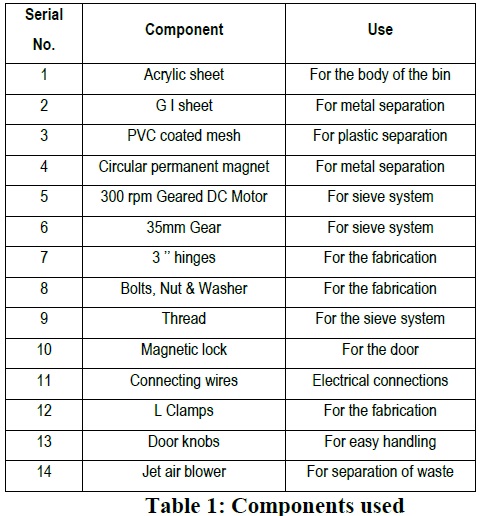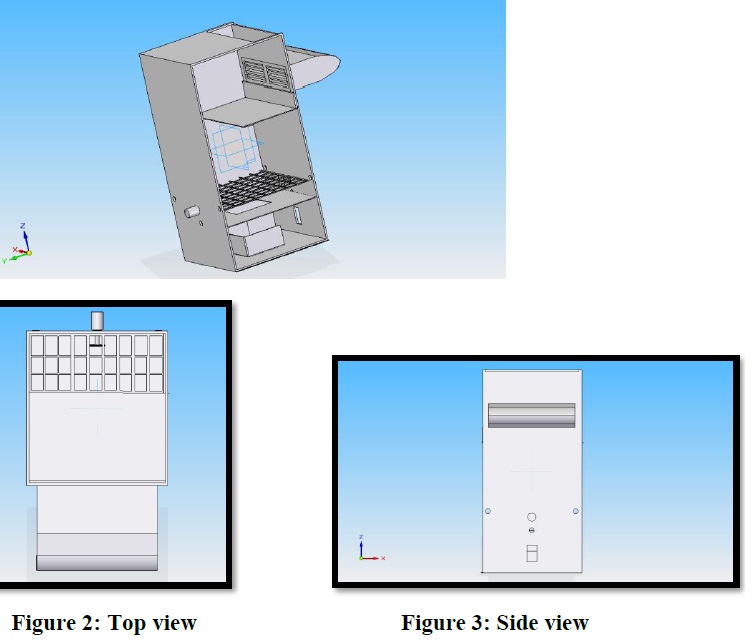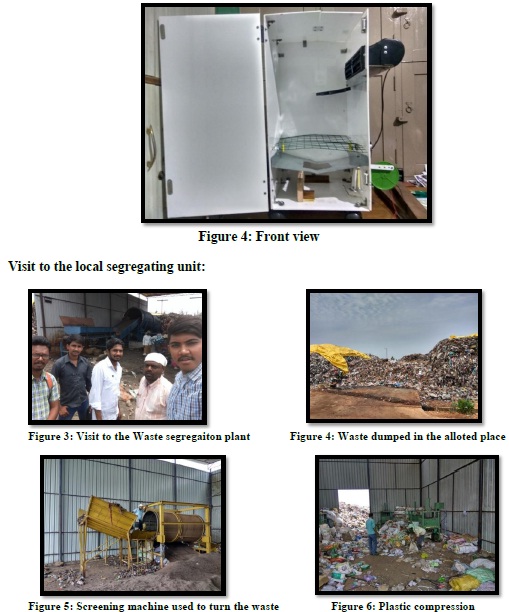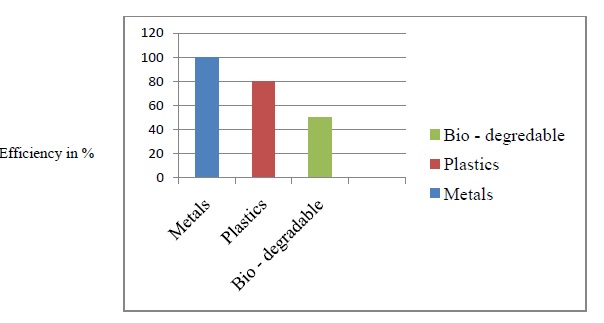





Published on Nov 30, 2023
In past few decades there is a rapid growth in the rate of urbanization and thus there is a need of sustainable urban development plans. Now using new age technology and strategic approach, the concept of smart cities is coming up all around the world. A smart city is incomplete without a smart waste management system. This paper describes the application of our model of “Smart Bin” in managing the waste collection system of an entire city. The network of sensors enabled smart bins connected through the cellular network generates a large amount of data, which is further analyzed and visualized at real time to gain insights about the status of waste around the city. This paper also aims at encouraging further research in the topic of waste management.
India being the developing country that it is, the per capita waste generation is increasing by 1.3% per annum. India produces 42.0 million tons of municipal solid waste annually. The total quantity of solid waste generated in urban areas per day of the country is 1.15 lakh tonne. Average waste generation rate is 0.4 Kg per capita per day in 0.1 million plus towns. Urban local bodies spend around Rs.500/- to Rs.1500/- per ton on solid waste management of which, 60-70% of the amount is for the collection alone. Crude dumping of the collected waste is practiced in most of the cities, while a few have segregation and recycling units.
Due to poor management of domestic waste from households, the environment is getting polluted day by day and is on the rise. Solid wastes when improperly disposed off can be an environmental hazard and harmful to the atmosphere as well. These wastes when improperly dumped into the atmosphere can lead to the destruction of the ozone layer and may cause diseases such as cancer. As a result of this problem is global warming. Air pollution can also lead to formation of acidic rain which is dangerous to crop life since it fastens the removal of soil fertility from the surface of the ground. It also affects drainage. When solid wastes are dumped in drainage channels and gutters, they block the flow of the sewage. This may cause flooding. At the same time, solid waste wastes also affect soil drainage which hinders the growing of crops.
Our project aims to do exactly the same, i.e. The segregation of waste into three major categories;
(i) Metallic,
(ii) Plastics and
(iii) Biodegradable.
The segregated waste from houses can then be directly sent to processing units instead of the segregation plants. This saves a lot of human and economical resources to the government.
We propose to develop a “Smart Bin”, that is capable of segregating waste automatically once it is dumped into the bin, thereby reducing the human efforts required to segregate waste and also make India a cleaner place to live in.
The Smart bin aims at segregating waste at the source itself as initiated by our government recently. It eliminates the human interference for the segregation of waste and also the need of setting up huge segregation units in each district of the country. This saves a lot of time and money for the government. It also helps to prevent environment pollution that will be caused in and around the waste segregation units.
A small scale industry (SAI ENTERPRISES) having major problem related to cost of material handling system, they does not use automated device so that they use manually machines. The material handling like lifting of raw materials, transfer the finished product to final stage, transfer the one product from one department to other department so that overall cost required for material handling is increase. This cost affected on profit of company so that we avoid this problem we find solution to overcome above problem with the help of Smart Bins.



In operation, any waste (Magnetic material, plastic and bio-degradable) is trashed into the bin through the door. It enters into the first compartment of the bin where the magnetic materials are being segregated. This compartment consists of a G I Sheet attached to the acrylic walls of the smart bin at one end and opened on the other side. The magnets placed at the bottom of G I sheet attract the Magnetic materials and there by magnetic materials get collected.
Further, the plastic and bio-degradable materials are blown off to the second compartment by the blower which is placed adjacently. The materials enter the second compartment which consists of a mesh being vibrated by the gear coupled to the geared dc motor. The materials as soon as they fall on the mesh are subjected to vibration which causes the separation of plastic and bio-degradable materials.
The bio – degradable materials are made to fall into the third compartment. Here a piston arrangement is made to compress the biodegradable waste that falls into the box placed in the third stage of the bin. This is how sequential segregation takes place in our “SMART BINS”.
The efficiency of segregation does not change whether we dump the waste one at a time or all together into the smart bin. Thus Smart bins can be placed at homes, offices and apartments to segregate waste at the source efficiently. However, we observe that there a few improvements needed at the different stages for segregating plastic and paper so that we can achieve 100 % efficiency in the segregation process.

The following observations were made during the segregation:
1. In the second stage, smaller plastics are easily passing through the mesh and entering the bio – degradable compartment.
2. In the third stage, larger bio – degradable wastes are not entering the chamber as larger particles are not able to pass through the mesh.
3. Though Smart bins are capable of segregating the common types of dry wastes, it fails to segregate the wet waste, medical and hazardous wastes.
4. The segregation process is automated; however the collection of the waste after segregating should be collected manually.
As an extension to the proposed Smart Bin, an improvised and technically more advanced version can be designed to segregate harmful waste from nuclear and chemical plants. This would be a safe improvisation over existing methods that involve human in harmful waste collection. This could help reduce mortality rate due to exposure to nuclear radiation or chemical toxins. Besides being a time saving alternative, it would be a secure resource to employ.
Improvements made in the stages two and three of the Smart bin, i.e. segregating of plastics and biodegradable wastes can lead to more efficient product. Further a suitable gum if used in the final compartment of the Smart bin can be able to make compact briquettes from the bio – degradable waste collected during segregation. Also programs can be implemented to the smart bins for storing and transferring waste segregation related data between various agencies associated with waste segregation.
Owing to the high rates of waste disposal per person, per day in the country, there arises a dire necessity to seek an alternative. The existing system of waste collection is highly monotonous and dependent on human labor. The absence of a person to collect waste from the neighborhood adversely affects the immediate surroundings, leading to an unhygienic environment. In today’s world, time is another constraining factor. This prevailing scenario compels the existence of a feasible substitute that can resolve the shortcomings of the current methodology of waste collection.
A Smart Bin in each house or office will eliminate the need for human interference for the collection of waste for segregation purpose. Also a smart bin at the source of waste generation eliminates the need for setting up huge areas of waste segregating units. This will be saving the government both time and money required for establishing and maintaining the units.
[1] Michael Alexander, John Walkenbach, “Microsoft Excel Dashboards & Reports”, Wiley; Second edition, 28 June 2013. (Book style)
[2] Yann Glouche, Paul Couderc. A Smart Waste Management with SelfDescribing objects. Leister, Wolfgang and Jeung, Hoyoung and Koskelainen, Petri. The Second International Conference on Smart Systems, Devices and Technologies (SMART’13), Jun 2013, Rome, Italy. 2013. (Conference proceedings)
[3] Foday Pinka Sankoh, Xiangbin Yan, Quangyen Tran on “Environmental and Health Impact of Solid Waste Disposal in Developing Cities: A CaseStudy of Granville Brook Dumpsite, Freetown, Sierra Leone,” on Journal of Environmental Protection, 2013, 4, 665-670. (Journal or magazine citation)